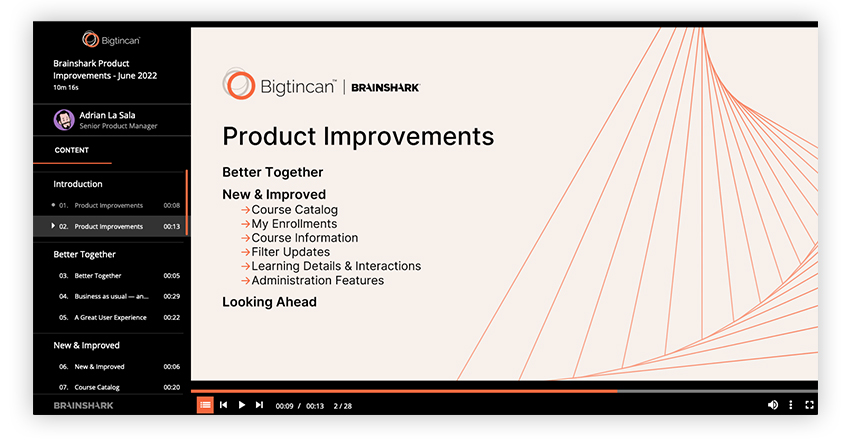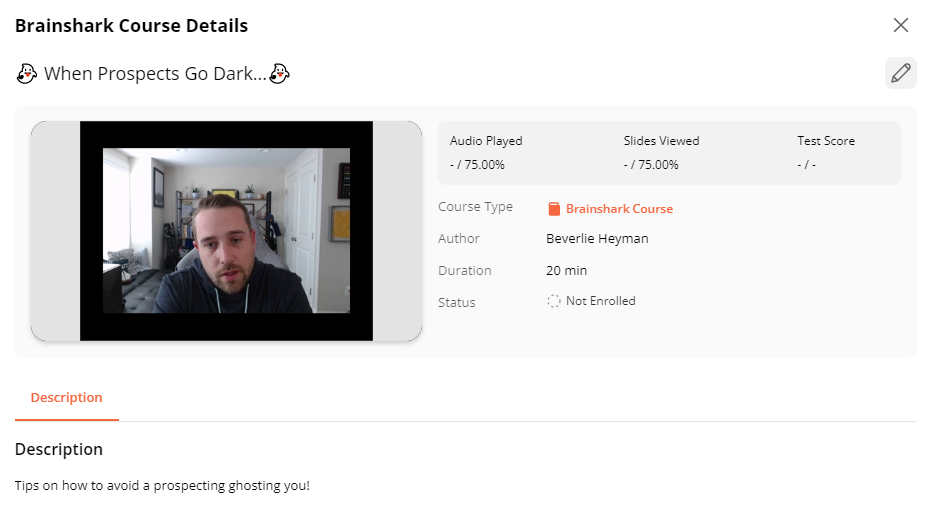No sales enablement team? 4 ways to survive

Companies are 48% more likely to experience high buyer engagement when they have had sales enablement processes in place for more than two years, according to Sales Enablement Pro’s State of Sales Enablement Report 2022.
Most companies likely have some form of sales enablement going on these days, even if they don’t refer to it as such. (If you’re brand new to the idea of sales enablement, start here.)
But even if sales enablement doesn’t exist as a formalized function or with a designated person leading the way (which it really should!), there are still ways to implement enablement and readiness strategies to support your sales organization.
It can take time to establish a robust sales enablement function — and to reach that two-year benchmark — so here are four strategies for survival until that happens.
#1. Lean on subject matter experts and other departments
If you’re strapped for time and resources, lean on your subject matter experts (SMEs).
Your internal SMEs can include senior executives, product managers, marketing leaders, and engineers, depending on your organization.

Ask them if they have existing content that could be utilized for sales onboarding and training or request key information to jumpstart your content creation process.
Teams such as product management or marketing should (and typically do) contribute to and create content for sales. In fact, product marketers often become the de facto sales enablement team at many smaller companies or those companies just getting started with sales enablement.
See also: Why and how to align sales enablement and product marketing to drive greater revenue
It’s beneficial for SMEs to be involved because not only will they be viewed as thought leaders internally, but you can be sure you have accurate and up-to-date information for your content (instead of trying to be the expert yourself).
In addition, if you have a sales enablement or readiness platform to easily build and share content, not only will that make your job easier, but SMEs will be more willing to help if they know the content creation process isn’t complicated or time consuming.
#2. Save time and simplify your communications
Consider sending out a weekly newsletter to your sales organization to inform or remind them of new content, events, product updates and learning tasks they need to complete.
Fridays are a good time to capture the attention of sales reps – usually reps are winding down the week or can read the newsletter over the weekend. They’ll stay informed without having to take time away from selling. They can also go back and reference the newsletter anytime to find content, training, and other relevant information.
You may also choose to send a Monday morning newsletter to help reps prepare for the week ahead. You may have to do some testing to see what works best for your team.
Many sales enablement platforms also act as a central hub for communications and let you automate newsletters, alerts, and any relevant scheduled reports so you can set it and forget it.
#3. Enable sales managers first – it’ll make your job easier
“Smart enablement teams enlist sales managers as allies by aligning training and content services and developing corresponding coaching frameworks,” according to CSO Insights.
Their research also found effective sales manager enablement correlates with better quota attainment, revenue plan attainment, and win rates.
If you don’t have a sales enablement function, you have no choice but to be smart about how you’re spending time and allocating resources. So if you first spend your time enabling sales managers – with onboarding and training tailored to them – all of those benefits will trickle down to your salespeople.
This “manager-first” approach will help as the organization grows and eventually forms a formal sales enablement function, said Jim Ninivaggi, former Chief Readiness Officer at Brainshark.
See also: How to use data to close the sales capacity gap and increase sales productivity
#4. Leverage peer learning
You already have a wealth of expertise and best practices, you just need to harvest it from your sales force.
Have top performers share win stories, best practices, pitch examples, objection-handling, and new product messaging as part of a peer learning program. Research shows sales reps trust their peers for training tips, anyway.

It’s as easy as asking them to record a video with their mobile phone or webcam and sharing the recording with the sales team. If you have sales enablement technology, that process is even easier, as videos can be created and shared via the platform.
Even if you don’t have a formalized sales enablement function, you can still implement enablement and readiness practices to support the sales organization. The results speak for themselves.
Need advice on how best to get started with sales enablement? Speak to our team of enablement experts.

